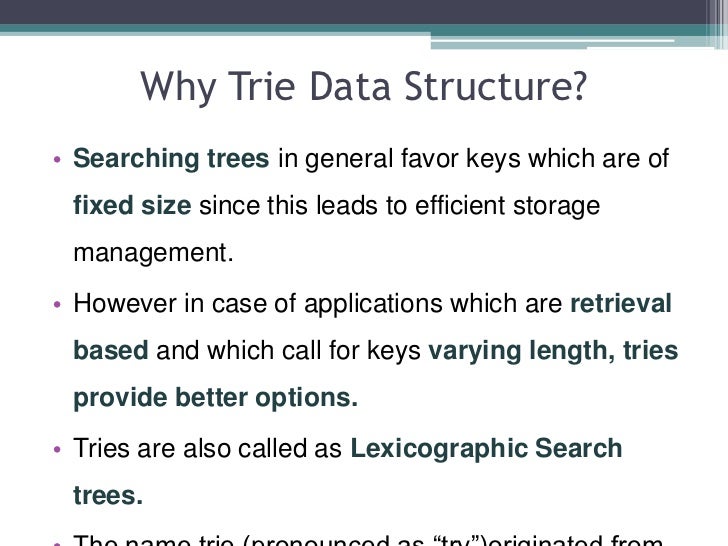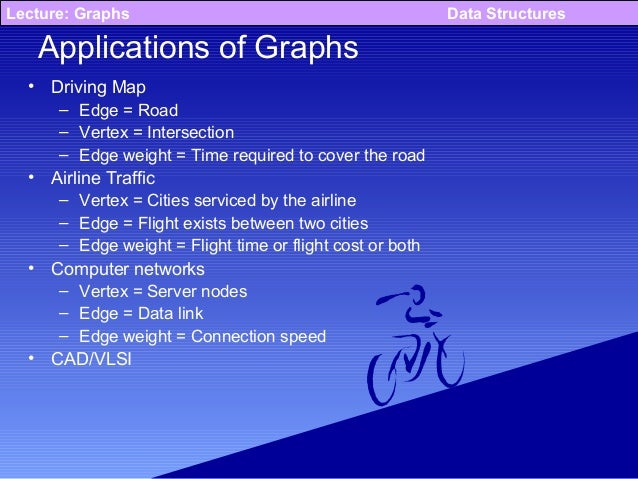Applications Of Data Structures
This is a list of data structures. For a wider list of terms, see list of terms relating to algorithms and data structures. For a comparison of running time a subset of this list see comparison of data structures.
Handbook of Data Structures and Applications - CRC Press Book The Handbook of Data Structures and Applications was first published over a decade ago. This second edition aims to update the first by focusing on areas of research in data structures that have seen significant progress.
Data structure is a particular way of organising and storing data in a computer so that it can be accessed and modified efficiently. The different Data Structures are: Array: is a linear data structure consisting of a collection of elements eac. Data structures have many applications in the area of system development, data base design, software coding and computer networks. The efficiency of using data structures in performing various operating system jobs are explored in detail with.
- Generally, data structures can be divided into two categories in computer science: primitive and non-primitive data structures. The former are the simplest forms of representing data, whereas the latter are more advanced: they contain the primitive data structures within more complex data structures for special purposes. Primitive Data Structures.
- Applications of data structures 1. Applications of Data Structures Ram. Agenda. Applications of Linked List. Applications of Stacks. Applications. Linked List. The linked list is fundamental, and as the simplest persistent. Stack. To reverse a word. You push a given word to.
- Trees and graphs are very important data structures. They are used in compilers and in data base. Compiler uses tree structures do convert data types and do calculations on booleans and variables.
- Applications of Stack In a stack, only limited operations are performed because it is restricted data structure. The elements are deleted from the stack in the reverse order. Following are the applications of stack: 1. Expression Evaluation 2. Expression Conversion i. Infix to Postfix ii. Infix to Prefix iii. Postfix to Infix iv.
- 1Data types
- 2Linear data structures
- 3Trees
Data types[edit]
Primitive types[edit]
- Boolean, true or false.
- Floating-point numbers, limited precision approximations of real number values.
- Including Single precision and Double precisionIEEE 754 Floats, among others
- Integer, integral or fixed-precision values.
- Reference (also called a pointer or handle), a small value referring to another object's address in memory, possibly a much larger one.
- Enumerated type, a small set of uniquely named values.
Composite types or non-primitive type[edit]
Applications Of Data Structures In Real World
- Array (as an example String which is an array of characters)
- Record (also called tuple or structure)
- Union (Tagged union is a subset, also called variant, variant record, discriminated union, or disjoint union)
Abstract data types[edit]

- Multimap (example Associative array)
- Queue (example Priority queue)
- Graph (example Tree, Heap)
Some properties of abstract data types:
 Music in Bali (1966). Gamelan Gong Kebyar: The Art of Twentieth-Century Balinese Music (2000) by Michael Tenzer, and. New Haven, CT: Yale University Press. Included is an excellent sampler CD of Balinese Music.
Music in Bali (1966). Gamelan Gong Kebyar: The Art of Twentieth-Century Balinese Music (2000) by Michael Tenzer, and. New Haven, CT: Yale University Press. Included is an excellent sampler CD of Balinese Music.
| Structure | Order | Unique |
|---|---|---|
| List | yes | no |
| Associative array | no | yes |
| Set | no | yes |
| Stack | yes | no |
| Multimap | no | no |
| Multiset (bag) | no | no |
| Queue | yes | no |
Order means the insertion sequence counts. Unique means that duplicate elements are not allowed, based on some inbuilt or, alternatively, user-defined rule for comparing elements.
Linear data structures[edit]
A data structure is said to be linear if its elements form a sequence.
Data Structures Tutorial
Arrays[edit]
Lists[edit]
- Doubly connected edge list also known as half-edge
Trees[edit]
Binary trees[edit]
B-trees[edit]
Heaps[edit]
Trees[edit]
In these data structures each tree node compares a bit slice of key values.

Multiway trees[edit]
Space-partitioning trees[edit]
These are data structures used for space partitioning or binary space partitioning.
Application-specific trees[edit]
Hash-based structures[edit]
Graphs[edit]
Many graph-based data structures are used in computer science and related fields:
- Decision tree
Other[edit]
See also[edit]
External links[edit]
- Tommy Benchmarks Comparison of several data structures.